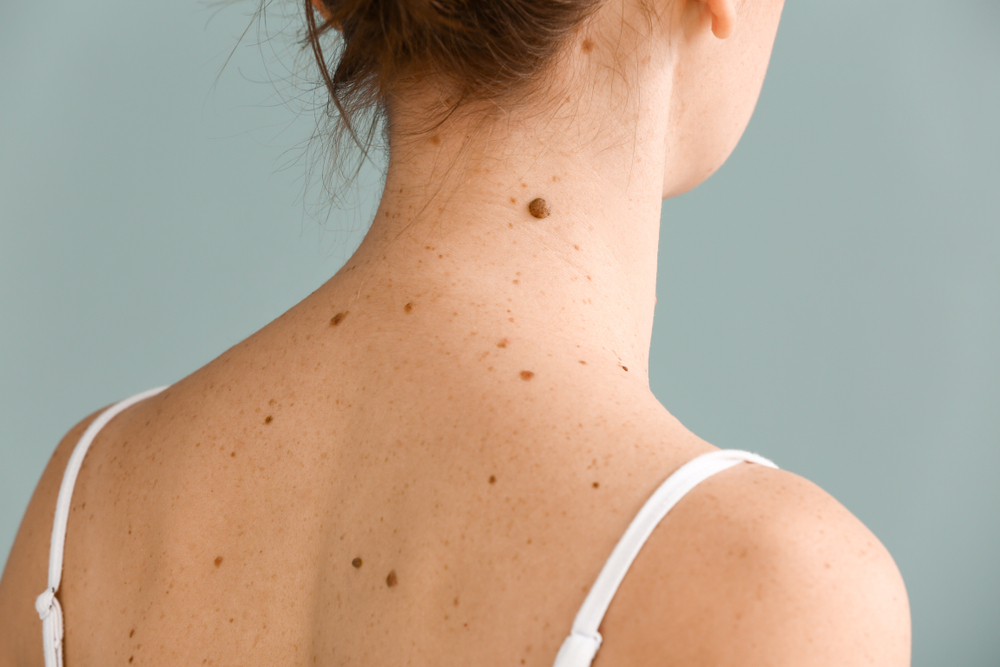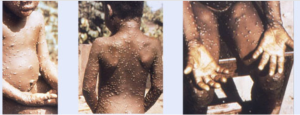Introduction
A mole is a benign or non-cancerous condition of the skin characterized by the overgrowth of pigment-producing cells of the skin known as melanocytes. Although moles may be seen since childhood, they can increase in number and size during teenage and early adulthood years. New moles in an adult are more likely to become cancerous than pre-existing moles. Moles can develop anywhere on your body, both in sun-exposed and sun-protected areas e.g. armpits, under your nails, and between your fingers and toes.
Majority of people have moles, and mostly they are harmless. However, It is important to recognize changes in a mole or the appearance of the skin that can suggest the development of cancer.
Why should I be worried if I have a mole?
The worrisome significance of having a mole is that it may be an early sign of melanoma. Melanoma is the most common and one of the most aggressive skin cancers. The risk of melanoma occurring in congenital moles is estimated to be 2.5 to 5 percent. If more than 50 common moles are present in the body, there is a higher chance that it could be a sign of skin cancer.
A mole may also progress to symptomatic neurocutaneous melanosis i.e. proliferation of melanocytes in the brain and spinal cord. This can result in life-threatening neurological and neurodevelopmental disorders.
Other skin cancers like basal cell cancers or squamous cell cancer can also develop based on the type of cells of skin they affect.
Therefore, should you notice changes in the number and appearance of your moles, it is highly recommended that you consult a dermatologist. A dermatologist will conduct a skin biopsy, in which a small piece of tissue from the affected area is cut and studied under a microscope for a histopathological evaluation.
Studies on Malignancy Risk of Moles
Studies have shown that moles usually appear during the first two decades of life. Approximately, about one in every 100 babies are born with moles. Congenital moles are evident in 1% to 6% of neonates. The risk of melanoma arising in moles less than 1.5 cm in size and the medium-sized congenital mole is less than 1% over a lifetime and virtually nonexistent before puberty. Recent data suggest that melanoma develops in approximately 5% of patients with large moles greater than 20 cm in size. Early detection of melanoma is important as this can provide significant survival benefits. The 10-year survival rate for melanoma that is detected early is 93%.
What are the risk factors for malignant moles?
Major factors that increase your risk of skin cancer in a mole are:
- Excessive exposure to ultraviolet (UV) radiation from the sun
- Drugs: Immunosuppressive treatments such as anticancer drugs, steroids etc.
- Genetic factors: If parents have a lot of moles, their children also have high chances of having moles.
- Race: Moles are more common in fair-skinned people than dark-skinned people
How do I know if it is just a mole?
A mole appears as an elevated, dome-shaped bump on the surface of the skin and feels rubbery in touch. They may be flesh-colored or brown and can appear anywhere in the skin including the face, scalp, neck, upper arms, and legs, neck, eyelid, etc. The size of a mole may range between 5 millimeters to 1 centimeter. Moles are mostly round with well-defined borders. It can even be hairy and may appear warty but they are usually never painful or itchy.
Most people have 10 to 40 moles on average. Moles may fade away with age, or become darker and larger due to hormonal changes.
To distinguish between normal moles and more sinister cancerous ones, look out for ‘the ABCDEs of melanoma’. In this method of examination, we look at:
- A – Asymmetry (moles with 2 very different halves)
- B – Border irregularities (notched, scalloped)
- C – Colour changes (many colours or uneven distribution of colour)
- D – Diameter (> 6mm)
- E – Evolving mole (change in shape, size, and color)
Additionally, if the moles become itchy, bleeding, or painful, and if there are more than 60 moles, they can be a sign of something more serious. In such scenarios, it is always recommended that you visit a dermatologist early on.
How can I prevent my moles from progressing to skin cancer?
Prevention is always better than cure. Listed below are a few precautions that can halt the development of melanoma from a benign mole.
- Sunscreen: Regularly use a good quality sunscreen at least 30 minutes before sun exposure. Repeat application every 2 hours and after exposure to water or excessive perspiration. Sunscreen is needed even if we stay indoors. The American Academy of Dermatology recommends a broad-spectrum, water-resistant sunscreen with an SPF of at least 30.
- Avoid outdoor activities at midday as sun rays are strongest between 10 am to 4 pm.
- Sunglasses, broad-brimmed hats, long sleeves, umbrellas, and other protective clothing help to avoid damaging UV rays.
- Avoid tanning lamps.
- Examine your skin every month for warning signs of melanoma.
- Photographs can be taken at periodic intervals for monitoring the progression of moles.
What to do if you have a mole?
There is not much to worry about as many moles are non-cancerous and do not require medical attention.
A mole can however be removed if it is:
- troublesome (rubs against clothing or gets in the way of combing your hair)
- unattractive to a patient
- suspicious of skin cancer
Mole removal takes only a short time and is usually done on an outpatient basis. It can be removed by a simple dermatological procedure for cosmetic purposes.
Commonly used techniques:
- Dermal electrosurgical shave excision: It is a simple procedure that is less invasive and expensive to perform. The lesion is shaved with a surgical blade. As it does not require suture or stitches, scarring is less noticeable.
- Surgical excision: The dermatologist cuts out the entire mole and stitches the skin closed if necessary. It is done if the moles are too large for removal by shaving or if they are recurrent. Serial excision in multiple sessions may be required.
Other new modalities:
- Skin resurfacing (dermabrasion)
- Chemical peel for lightening of skin pigmentation
- Laser ablation for lightening of skin pigmentation
It is not advisable to remove these moles at home as there are chances of infection and scarring.
Concluding Thoughts
Regular monitoring of moles is crucial as early detection of melanoma can vastly increase your chances for cure. Look for anything new, changing or unusual in the appearance of your skin and seek prompt medical attention where necessary.












